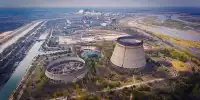That transitional area between the Christmas break and the New Year is usually an odd week. In Norway, it has known as Romjul, or “Dead Week” (thanks Haje). For some, it is a time for silence and contemplation on the year that was — and for others, it is a time for CES embargoes. At Actuator HQ, we are presently concentrating on the latter while attempting to keep the former in mind.
We have spent the last several weeks compiling a list of the year’s most important developments in the space, including delivery, warehouse/fulfillment, and food prep. We also chatted with industry leaders such as CMU robotics director Matthew Johnson-Roberson and Boston Dynamics CEO Rob Playter, OpenRobotics CEO Brian Gerkey, and iRobot CEO Colin Angle. We contacted MIT CSAIL Director Daniela Rus to comment on the topic this week. She is gone above and above in her comments for this final Actuator of 2021, so I will hand it up to her.
In 2021, what was the most important robotics/AI/automation trend? In terms of robotics and automation, the pandemic and related labor shortages show that robots play an important role in the workplace. Although there has been a rise in the use of robots in manufacturing and logistics, where autonomy may add value, autonomy on the roads in the form of a robotaxi is still a long way off. With breakthroughs in soft robot bodies and machine-learning-driven robot brains, research has made significant progress toward safer and more competent robots.
We have observed a rise in awareness of the problems with today’s AI solutions in AI. Many deep neural network applications have been embraced by industry, allowing tools to complement labor in a range of disciplines. However, it has become evident that these methodologies need data availability, which means large data sets that must be manually categorized and are not readily available in every field. The data must be of extremely high quality, and if the data is biased or poor, the performance of the systems trained on it will be likewise poor.
Furthermore, these systems are black boxes, meaning that users cannot actually “learn” anything from the AI’s internal workings. There are also issues with robustness, as the trained models are frequently unstable, and we must remember that the systems do not execute “deep reasoning,” but rather a shallow pattern matching. The research community is addressing these issues.
What will these categories look like in 2022? As we go forward in our fast-changing environment, I think that robots and artificial intelligence (AI) may assist us in realizing our human potential, both individually and collectively. While the area of industrial robotics has evolved over the last 60 years, allowing hard-bodied machines to do complicated assembly jobs in limited industrial settings, the next sixty years will usher robots in human-centric environments to aid people with physical chores.
While industrial robots have mostly been influenced by the human form over the last 60 years, soft robots inspired by the animal world will be the next stage: shape and variety modeled after our constructed environment, with the ability to replicate our natural condition. While industrial robots have been constructed of hard plastics and metal for the past 60 years, I anticipate the next 60 years will offer us machines made of natural or artificial materials such as wood, plastics, paper, ice, and even food.
We will also see new AI concepts, a greater focus on AI and privacy, and a discussion of AI’s long-term viability. It is crucial to remember that today’s most significant achievements are the result of decades-old concepts that have been strengthened by massive quantities of data and computing. To assure development, new technical concepts and financing are required. Furthermore, we will have a better understanding of machine learning’s carbon footprint and take Sustainable AI more seriously.
















